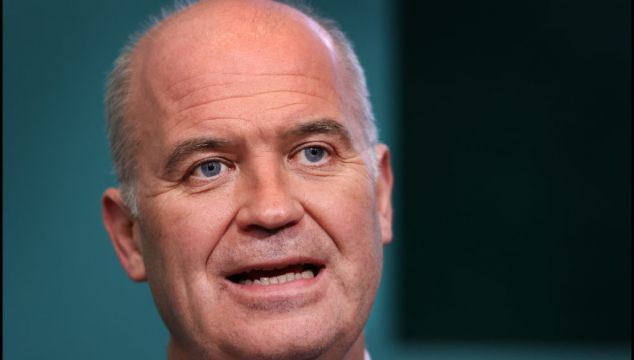The country’s chief medical officer has set out the rationale behind the lifting of almost all Covid restrictions, saying the Omicron variant produced a lesser burden of severe disease amid a peak in cases two to three times higher than reported.
Case numbers were towards the most pessimistic projections during the Omicron wave of the pandemic, Dr Tony Holohan said in a letter to Government, but serious clinical outcomes were “much less than expected”.
There was “clear evidence” nationally and internationally that the variant is associated with a “significantly reduced population level of severe disease despite continuing high levels of transmission”, Dr Holohan said according to The Irish Times.
In the letter recommending the lifting of restrictions, Dr Holohan said the “overall epidemiological position is improving, and the most recent data indicates that we have now passed a peak in this wave of infection”.
The Omicron variant, which emerged in December, now accounts for 97 per cent of all Covid-19 infections in Ireland.
True peak
During an unprecedented surge in cases driven by the variant, some 400,000 Covid cases were logged between December 30th and January 19th, including 375,000 PCR confirmed cases and 25,635 positive antigen tests uploaded to the HSE system.
However, Dr Holohan said this was a vast underestimation of the numbers infected, with two to three times as many cases as was reported at the peak of infections.
This would equate to between 800,000 and 1.2 million people being infected with Omicron recently.
Despite the record case numbers, hospital admissions of people with Covid remained stable, peaking at 1,063 on January 10th and then falling below 900 as the average number of newly-confirmed cases fell.
The number of patients in intensive care (ICU) peaked at 126 on November 23rd before the Omicron surge, and fell to 73 on January 18th. Approximately half of confirmed cases in ICU are unvaccinated.
Another rise
Although case numbers are currently decreasing at an average of 6 per cent per day, Dr Holohan anticipated that they may rise again.
“As case numbers and numbers in hospital decline and the threat recedes, population mobility and social contact will increase, creating additional opportunities for viral transmission, a process which may be accelerated by an increase in social contacts following the relaxation of restrictions. Infections and detected cases may then stabilise or start to increase,” he wrote.
However, Dr Holohan said the level of immunity in the community as a result of infection and the booster vaccination programme should ensure that rising case numbers will not result in a high levels of “serious disease or an unsustainable demand on healthcare”.
Nphet will review the impact of the lifting of restrictions on February 17th.
On Friday evening, Taoiseach Micheál Martin announced the lifting of almost all restrictions from 6am on Saturday, including:
- No limits on household gatherings;
- No 8pm closing time for hospitality and events;
- No capacity restrictions on indoor and outdoor events;
- Covid passes will no longer be needed for hospitality and indoor activities.
Mr Martin said "it is time to be ourselves again" as Ireland has "weathered the Omicron storm," but cautioned he could not promise "there won’t be further twists in this pandemic requiring different decisions in the future."







